Check out our Lawn Weeds Identifcation Guide- Weeds in Texas. With the vast number of climates in Texas, it’s no shocker that the variety of weeds in Texas is pretty broad. If you need help removing any of these weeds from your lawn, go to our lawn fertilization and weed control service page to request a quote.
Which weeds should you be looking out for in your own North Texas yard?
There are two major types of weeds:
- Broadleaf weeds
- Grassy weeds.
The broadleaf variety has wider and more noticeable foliage, so they stick out among your turf grass. For information on how to eradicate broadleaf weeds, read our article, “How to Get Rid of Broadleaf Weeds.”
However, grassy weeds are more effective at hiding in your lawn until they become visible, at which point they have likely spread beyond the point of manageability. Check out our article titled, “How to Get Rid of Grassy Weeds,” for information on how to remove grassy weeds from your lawn.
Here, we will explore some common weeds in southern areas like Texas and how to deal with them effectively.
Identify Common Broadleaf Weeds in Texas
In addition to the common dandelion, there are several other invasive plants you need to be on the lookout for in your yard. Now keep in mind that “weed” doesn’t necessarily mean the plant will harm your grass. It simply means that it spreads rapidly and will take over your turf quickly.
Here are a few common broadleaf weeds to look out for:
Bittercress
Also known as hairy bittercress, this lovely white flower will wreak havoc on your lawn if you allow it to. It blooms in the spring and grows a lengthy taproot that is difficult to dig up and fully eradicate. This weed spreads mainly through seeds. So eradicating the bittercress weed before it blooms is the key. The good thing is, a post-emergent herbicide used early on is effective. Because this is an annual plant, you only need to get rid of it once to prevent it from returning.Pigweed
Also known as amaranth, this plant pops up during late spring and early summer. While it sometimes shows up in turf grass, it is more problematic in crops and gardens.
Control pigweed preventatively, with winter mulching to discourage seed germination. In early spring, till your earth and pull up any seedlings attempting to sprout. Follow that with a second layer of mulch, and your pigweed will perish fairly easily.
Spurge
Spurge is a hardy plant with a variety of species and subspecies. While some are grown ornamentally, wild spurge is a disruption to an otherwise uniform turf grass.
It grows through the spring and summer, and is difficult to control because it thrives in a variety of environments and soil types. Experts recommend using both a pre- and post-emergent herbicide to fully rid lawn of spurge weeds.
Chickweed
This broadleaf annual is named for the fact that chickens love to munch on it. The problem is that it spreads rapidly and many find it intrusive and unattractive in their lawns.
Chickweed will grow up to eight inches high with tiny white flowers. Their growth pattern includes matting, which will choke out your grass, so best use a selective herbicide as soon as you notice their presence. Read more tips on chickweed control.
Purslane
Also known as the Dolly Parton Flower, this invasive succulent enjoys warm and well-watered soil but is certainly able to withstand heat and drought. Its nickname comes from the fact that its flowers bloom from 9 to 5!
Purslane seeds will survive multiple years beneath the soil, making it a bit of a hassle to get rid of. To get rid of purslane, use a post-emergent herbicide before it blooms, in order to kill off any buds before they get a chance to spread their seeds in your yard.
Creeping Charlie
Otherwise known as “ground ivy,” this weed spreads via creeping stolons along the ground. While it doesn’t directly harm your turf grass, its growth pattern tends to create “mats” that deprive your topsoil and root system of nutrients and moisture.
Creeping Charlie is difficult to remove, but easy to avoid. That is, a dense grass bed won’t allow it to set in at all. But if you’ve already been invaded, any leftover roots or stolons will easily sprout into a whole new plant to contend with!
Asterweed
This plant also goes by roadside aster and slender aster. It grows in clumps, producing flowers that resemble a daisy. While that sounds attractive at first, asterweed become problematic pretty quickly.
As it matures, the plants, stems become woodier, meaning that they’re sturdier as well as more difficult to get rid of. Best practice is to water thoroughly, as it prefers dry soil, and to apply a pre-emergent treatment before asterweed gets a chance to flower.
Learn how to remove aster weeds by reading this article titled, “Wild Aster Weed Control, How to Get Rid of.”
Thistle
Thistle will fool you when it first sprouts, looking a bit like dandelions until it produces those little spiked purple blossoms. The thing is, you really want to nip this one in the bud if you don’t want it around. A single patch will easily reach a foot wide and several feet tall.
It grows both as a biennial and a perennial, spreading mainly through seeds. The best measure is to treat vigorously with a post-emergent herbicide before blooming, and to dig up as many seedlings as possible.
Dandelions
Ah yes, the stereotype of all weeds! These poor souls don’t actually cause any harm to adjacent plant life, but they are often seen as an eyesore and are disliked for their opportunistic growth habit.
Dandelions bloom both perennially and biennially, producing yellow blossoms that soon turn to grey crowns of seed spores which children love to blow on. Dig them up by hand, or use a post-emergent herbicide that’s formulated specifically for broadleaf weeds.
Take a peek at one of our other articles for more information on,“How to Get Rid of Dandelion Weeds.”
Henbit
Named for the fact that yard birds love to munch on it, this annual weed blooms in the spring. It has notched leaves and spreads via seeds when it blossoms in late spring.
Like many weeds henbit is best dealt with before it blossoms and gets a chance to seed your yard. Keep an eye out for sprouts and treat them immediately with a selective herbicide.
Henbit is tough to remove and even tougher to remove without killing your grass. We have an article that will help, “How to Get Rid of Henbit without Killing Grass.”
Clover
This perennial intruder loves moist soil, so it’s most likely to crop up in overwatered lawns and low areas that don’t drain well. It doesn’t actually harm your grass or garden, but many people don’t appreciate the inconsistency it creates in their landscape.
Because clover loves wet soil, so one option is to give your lawn a brief dry spell to try and discourage clover growth. Selective spot-treatments for clover are also effective and typically safe for your grass.
Dollarweed
This weed is sometimes mistaken for a harmless plant called dichondra. However, it actually has darker and larger leaves, and will harm your lawn if left unchecked.
If you spot dollarweed in your yard, there are some simple measures to take. Herbicides like atrizine work fairly well if applied during early growth. Meanwhile, also apply mulch around shrubs and trees to prevent sprouting, and keep your lawn as healthy as possible to choke out the dollarweed.
For more tips on managing dollarweed in your lawn, check out this dollarweed fact sheet published by Clemson Cooperative Extension.
Field Bindweed
Field bindweed, also known as Convolvulus arvensis, is a perennial weed that is common in Texas and other parts of North America. It is a vining plant that grows up to six feet long and produces white or pink funnel-shaped flowers.
While it may be attractive to some, field bindweed is a problematic weed for gardeners and farmers as it quickly spreads and takes over an area. It is notoriously difficult to control, as its deep root system makes it resistant to herbicides and other control methods. Apply post emergents when field bindweed is actively growing.
Black Medick
Black Medick, also known as Medicago lupulina, is a common annual weed found in lawns and gardens throughout Texas. You will also see it spelled as black medic sometimes. It has small yellow flowers that bloom from late spring to early summer and produces small, round seeds that can persist in the soil for years.
While it may not be as problematic as some other weeds, Black Medick will still compete with grass for nutrients and water, leading to a thinning of the lawn. Control black medic through regular mowing and hand-pulling, or through the use of herbicides.
Purple Deadnettle
Purple deadnettle, also known as Lamium purpureum, is an invasive annual weed that is found in lawns and gardens throughout Texas. It has small purple flowers that bloom from early spring to early summer and produces seeds that germinate in the fall or spring. Purple deadnettle is edible and is rich in nutrients.
It is not as aggressive as some other weeds, but purple deadnettle will still quickly take over your lawn. Get rid of purple deadnettle by hand-pulling, or through the use of herbicides. However, it is important to note that it is also a valuable early-season nectar source for bees and other pollinators.
Showy Evening Primroses
Showy evening primrose, also known as Oenothera speciosa, is a native perennial weed that is found throughout Texas and other parts of North America. It blooms with large pink or white flowers from late spring to early summer and produces seeds that will persist in the soil for years.
While it may be attractive to some, showy evening primrose is a problematic weed for gardeners and farmers as it quickly spreads and takes over an area. Showy Evening Primrose is difficult to control because its deep taproot makes it resistant to herbicides and other control methods. However, it is an important source of nectar for pollinators and is sometimes intentionally planted in wildflower gardens or meadows.
Grassy Weeds Common in Texas
These intruders are a bit trickier to spot in your grass turf because they blend in pretty easily. That is, they masquerade as normal grass only at first. Most of them will quickly take on a different shape, color, or height than the grass breed you’ve chosen, so they’re easier to identify once your lawn has grown out a bit from mowing.
Here are a few grassy weeds to look out for:
Nutsedge
Sedges are one of the most difficult plants to get rid of in your yard. While some types are grown intentionally, their invasive nature is the reason they are commonly classed as a weed.
Nutsedge grows in clumps of v-shaped sprouts that resemble normal grass at first, but they also turn yellowish and grow much faster than common turf grass.
The best deterrent is to establish a dense turf grass that doesn’t allow for nutsedge to develop in the first place. This includes adequate watering and fertilizing practices. Use a pre-emergent herbicide if you suspect your lawn is at risk.
Dayflower Weed
This weed also known as asiatic dayflower, will look very much like your own lawn when it first begins to sprout, but don’t be fooled. Its biggest giveaway is the tiny blue flowers it produces, which bloom at all times of the year.
Dayflower is difficult to get rid of because its seeds remain viable for over a year while lying dormant in your soil. Hand-pulling seems fairly effective, and fertilizers with sulfentrazone show good results as well.
Quackgrass
This is a tough one to identify, as it initially resembles both ryegrass and crabgrass. In addition to its tufted growth pattern, what else it has in common with its brethren is its resiliency. The best deterrent is to foster a healthy grass bed that’s too dense to let quackgrass to set in in the first place.
Quackgrass is best avoided with proactive use of a pre-emergent herbicide that doesn’t allow it to gain any momentum. It’s a deep rooter so it’s hard to dig up. If you have any reason at all to believe your yard is susceptible to quackgrass, go ahead and treat it in early spring with a pre-emergent product.
Annual Ryegrass
While perennial ryegrass is sometimes used as a turf for lawns and landscapes, annual ryegrass is a poor choice for the long-term. It is often used in the short-term for populating fields, and sometimes mixed in with other grass seeds, which is a common mean by which it finds its way into residential lawns.
While not specifically harmful to your chosen turf grass, annual ryegrass only lasts up to two years. It will then die off, leaving unsightly yellow patches in your yard that need sod plugs or overseeding to remediate. It is identified by its thin blades and rapid growth pattern. Read this pdf published by Purdue University, “Successful Annual Ryegrass Termination with Herbicides.”
Crowfoot Grass
Also known as duck grass or button grass, you will likely recognize this weed by its fuzzy star-shaped spikes that extend beyond its grassy foliage. While not overtly invasive, many find this plant unattractive in their lawns and gardens.
Crowfoot grass does have a “matting” growth pattern that is potentially harmful to your soil and turf grass. Mulching is an effective method for garden areas, and a selective herbicide works best. Click on this link for more crowfoot grass removal tips.
Rescuegrass
Not to be confused with “fescue,” this grass is opportunistic but short-lived. Some appreciate it for its ability to sustain local wildlife, but it’s a bit of a liability when it comes to aesthetics.
While rescuegrass won’t harm your chosen turf grass in your yard, it dies off very quickly. This means you’re left to patch up yellow spots with overseeding or sod plugs. Handle rescuegrass with a pre-emergent herbicide.
Doveweed
This creeping weed does a great job of impersonating your turf grass, especially if you’ve got a bed of St. Augustine. Use a pre-emergent herbicide to treat this weed. However, the best way to spot it is noticing the clumping blades have a rubbery texture that differs from your established grass.
This foe will propagate easily and take over your lawn if not dealt with quickly using a pre-emergent herbicide. It spreads by creeping stolons (stems that grow along the ground), as well as by seeding, so be sure and tackle it before it gets a chance to spread and start flowering.
Crabgrass
This may be one of the most formidable foes known to residential, commercial, and ranch-based land owners. Crabgrass is truly harmful to your turf, and it’s incredibly challenging to get rid of.
This grass looks a lot like turf grass at first, but for its clumping growth pattern and rapid spreading. It propagates both through seeding and through stolens, creating a double threat. The best remedy for crabgrass is using a pre-emergent herbicide in early spring, to stave off any possible invasion.
Poa Annua (Bluegrass)
This plant is an avid seeder, which makes it especially difficult to control. It typically shows its face in late winter and early spring, and it really loves moist soil for seed germination.
The funny thing about Bluegrass is that you have to treat it differently depending on the turf you’ve chosen. For St. Augustine grass, a pre-emergent herbicide is your best bet. However, with Zoysia grass and Bermuda grass, both a pre- and post-emergent treatment will be best. No matter the grass type, treat bluegrass with a pre-emergent first.
Dallisgrass
This perennial grows in clumps that will continue to get larger until you stop it. Some weeds are simply opportunistic in their growth patterns, but dallisgrass will actually choke out your turf grass with its roots.
Because it poses an immediate threat to your lawn, dallisgrass needs to be dealt with as quickly as possible. Unforunately it grows well in clay-rich soils like those found in North Texas. Take all the proper measures to enrich your turf so dallisgrass doesn’t get a chance to set in, and use a selective herbicide once you spot it.
Read one of our other articles to learn, “How to Get Rid of Dallisgrass.”
Crow-Poison
Crow poison looks somewhat like wild onion with its tiny white flowers, but it’s able to be identified by a lack of fragrance. Also known as false garlic, this pest is hardy enough to grow in all four seasons.
Please make sure you identify it properly, as this grassy plant is not edible! Some experts say that organic herbicides are sufficient to rid your yard of crow poison. Read more about removing crow-poison from your lawn. As with many other grassy weeds, a dense and healthy bed of turf is the best deterrent.
Goosegrass
While goosegrass resembles crabgrass, it is actually somewhat less of a pest. It grows in clumps, is considered a summer annual plant, and prefers poorly drained soil.
If your turfgrass is healthy enough to handle it, one good way to discourage goosegrass from propagating is to give it a brief dry spell. Additionally, aerating your soil will help prevent it from setting in to begin with. Pre-emergents are helpful in goosegrass prevention.
Johnsongrass
Johnsongrass, also known as Sorghum halepense, is a tall, perennial weed that is native to the Mediterranean region but has now spread to many parts of the world, including Texas.
This is a highly invasive weed that will quickly take over an area and compete with other crops or plants for nutrients, water, and sunlight. It has a deep, fibrous root system that makes it difficult to control using traditional herbicides or cultivation methods.It is capable of reproducing both by seed and by underground rhizomes, which sends up new shoots and creates new plants.
Johnsongrass is identified by its tall, upright stems (up to 12 feet in height), long leaves with prominent midribs, and large seed heads that resemble those of corn. Prevention is the best method for controlling Johnsongrass, as it is difficult to eradicate once it has become established.
Spring Starflower
Spring Starflower or Star of Bethlehem is a weed that is native to grassland and prairie regions of North America. It is a small bulbous perennial that grows in moist, shaded areas such as forests and along streams.
The plant is also known as Ipheion, and it belongs to the Amaryllis family. This is a poisonous weed and it smells like onions when it is crushed. These weeds live for two or more years and they spread underground through rhizomes. Treat Star of Bethlehem with herbicides during the beginning stages of growth.
Sandbur
Sandburs, also known as grassburrs, are a type of grass weed that is common in many parts of Texas. They are considered a nuisance by homeowners and gardeners.
Sandburs are an annual grassy weed that grow up to one foot tall. They have a distinctive seed head that is covered in sharp, spiny burrs. The burrs are painful and difficult to remove if they become lodged in clothing or animal fur. Read what Dr. McAfee, a professor and Turfgrass Specialist from Texas A&M University says about controlling sandburs.
Prairie Nymph
It is a perennial wildflower herb that grows up to two feet tall and produces yellow or orange-yellow flowers that resemble daisies. Prairie nymph blooms from late spring to early summer and is often seen growing in prairies, meadows, and along roadsides.
The plant has been used in traditional medicine to treat a variety of ailments, including fever, headaches, and rheumatism. In addition to its medicinal properties, prairie nymph is also a popular ornamental plant, prized for its cheerful blooms and ability to attract pollinators such as bees and butterflies. However, it is considered a weed in some areas due to its ability to spread quickly and compete with other plants.
Read more about removing unwanted wildflowers.

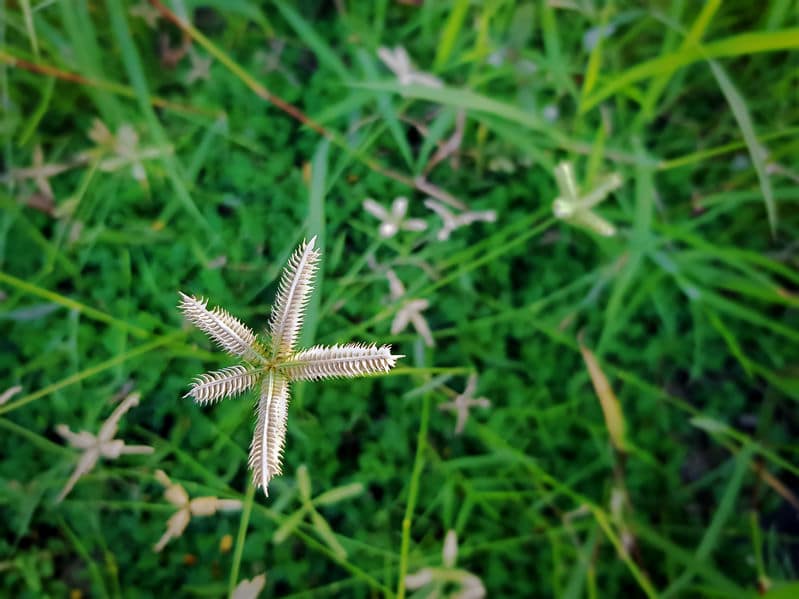
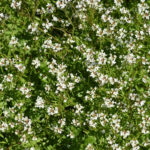
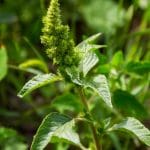
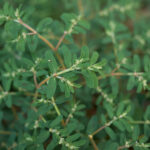
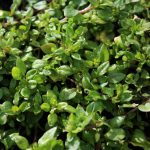
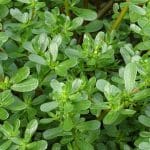
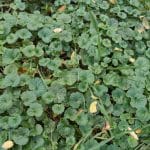
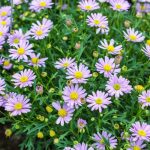
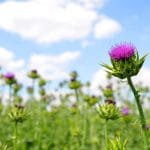
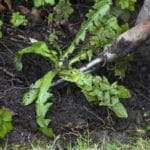
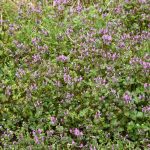
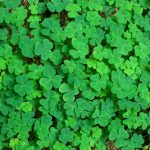
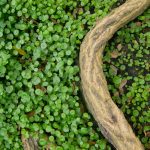
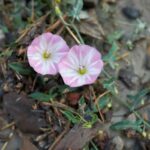
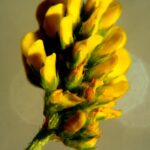
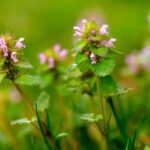
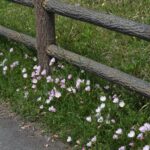
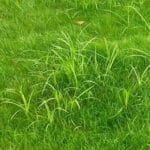
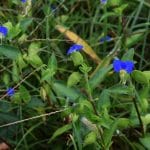
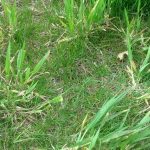
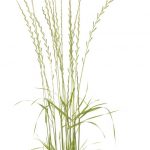
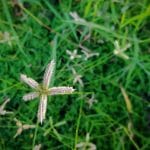
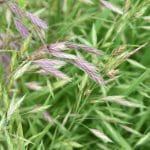
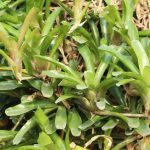
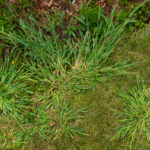
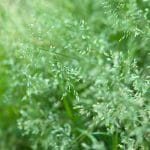
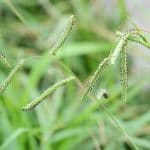
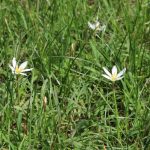
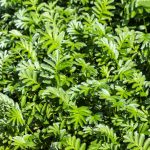
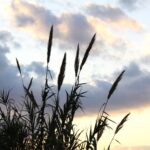
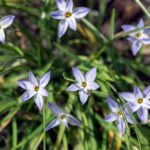
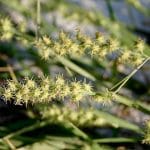
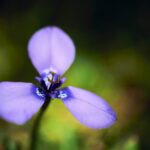

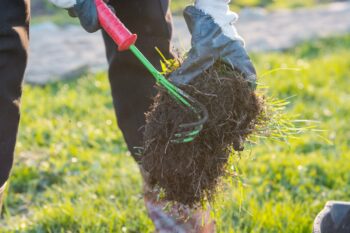
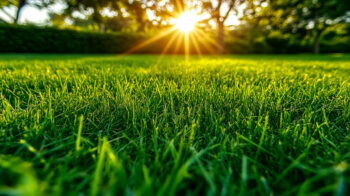
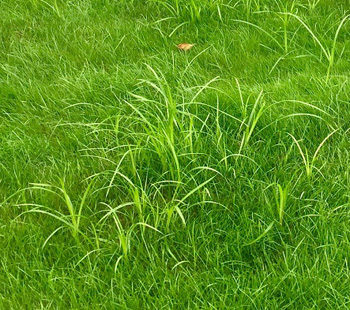
17 Responses
In my opinion, weeds are one of the major threats in farming as well as gardening. Every day we are trying to control them. This article will be helpful for us who are struggling with weed control.
Keep up the good posting.
Thanks
I cannot find the one is in my backyard. It’s thorns, grows tall, it’s green with white veins!
Please help me identify it so I can treated!
Milk thistle
We have a vine type of grass growing in out lawn that roots pretty deep. Turns yelow like hay in the winter
It’s probably Bermuda grass.
Any idea why I can’t find anything online about sageweeds?
There are over 700 species of sage plants. Searching for the botanical name, salvia plebeia for example, would probably be more helpful.
I am looking to identify a weed that is popular for horses to eat? It grows in the front yard mainly between the sidewalk and curb (don’t know if that makes a difference). I call them spurs because if you walk on it, it gets onto your shoes. If it tracks in the house it is very painful to step on. These “spurs” come easily off the weed.
Maybe Spurweed? https://www.google.com/search?q=spurweed
Any 2,4-D product should take care of it. Then focus on a good weed prevention program.
I have a weed that is new and spreading quickly. I have not seen it before the drought last summer It starts a small purple fuzzy ball then matures to larger spiky clumps about only inch half
Possibly Henbit or purple deadnettle.
But, what will kill Dalisgrass? It has inundated my 1 acre lot. I can’t seen to find any info on what will ace-deuce it
We have info about getting rid of Dallisgrass weed on this post – https://www.rynolawncare.com/how-to-get-rid-of-dallisgrass/
Great presentation. I think it would be even greater if you’d provide close-up photos of at least some weeds to ease identification.
I have a weed growing in my Bermuda grass that I have been unable to identify anywhere. It’s a grassy weed, very shallow root system, but the most distinguishing characteristics are the white spots and streaks on the grass blades.
Can anyone please identify this weed with my description?
Can you share a photo to support@rynolawncare.com?
i have a purple-ish, red orange fast growing weed among roses and now coming up in nearby holly. shows from inches tall to a foot, 3 feet, and even more.
moderate size serrated leaves.
a neighbor thought it to be poison ivy, but leaves are wrong.
seems to have no flowers, may spread thru rhizomes.
i am just south of Houston, TX.